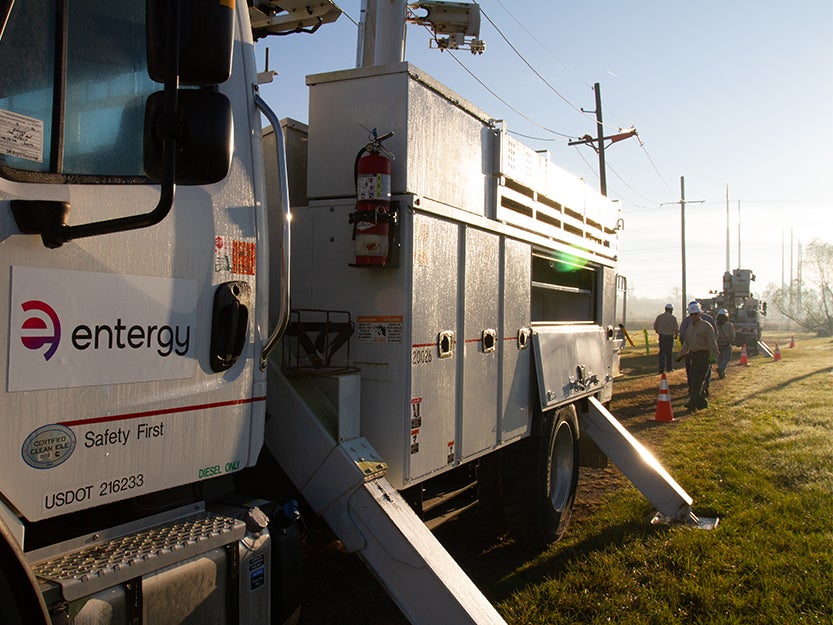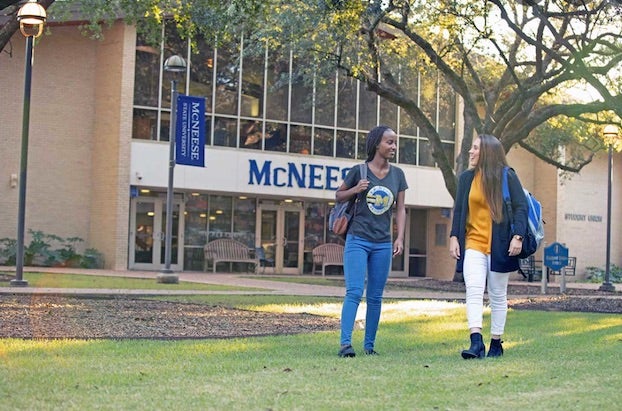Guest commentary: Holy ground in Cameron Parish
Published 3:03 pm Monday, March 20, 2023

- Snow geese, ducks and other waterfowl flock to the warm weather of the Pintail Wildlife Drive in Cameron Parish before migrating north. During the fall and winter, flocks of geese and ducks can be seen feeding in the fields along the drive.
By Megan Poole
We are standing on holy ground. That’s what oil and gas operator turned Southwest Louisiana Bucket Brigade coordinator James Hiatt tells me. Hiatt stands on a chenier in Cameron Parish that looks out to the Gulf of Mexico on one side and is cut in half by the Calcasieu Ship Channel and a cluster of chemical plants on the other. Two new proposed LNG projects — currently open for public comment — threaten to further contaminate untouched acreage. For Hiatt and others, there is only one clear stance: what God has consecrated, let man not contaminate.
Make no mistake — “holy ground” is not a metaphor. Last month Hiatt joined with local landowners, fishermen, shrimpers, ministers, and other people of faith to consecrate the land where Commonwealth LNG proposes to build a massive terminal of concrete to house toxic chemicals. An altar of driftwood, shells, and sea glass remains, marking as sanctified the marsh, cheniers, and way of life known by generations of residents.
Even less of a metaphor is the uniqueness of Cameron’s coastal geography. Because the natural process that built these cheniers — the shifting of the Mississippi River that deposited delta sediment — no longer exists, the remaining 2,000-10,000 acres of cheniers are the only ones we have left. Audubon has classified Cameron’s cheniers as a “global priority” given how its oak trees serve as vital resting stops for tropical birds migrating from Central and South America.
The area is also home to 10 different threatened and endangered species, including five different sea turtles. Home as well to over 400 bird species, 130 fish species, and dozens of mammals, insects, and amphibians, this area is one of the most biologically diverse in the nation.
Residents, birders, and tourists who travel the Creole Nature Trail each year know this hallowed ground well — it is where acres of marsh vegetation meet the visible reminder of what Americans’ present lifestyles cost. Much of the nation’s natural gas resources are exported through the Calcasieu Ship Channel, which is another way of saying: the Cameron coast is the place local, state, and federal officials are willing to sacrifice as the cost of doing business.
What this parish has already sacrificed for oil and gas —nearly all freshwater marsh is now brackish/saltwater marsh or open water — is no longer enough. In addition to Commonwealth LNG, Venture Global proposes a 92-mile pipeline across several Texas counties and Beauregard, Calcasieu, and Cameron parishes. The pipeline would feed into a new plant and terminal on Monkey Island that would impact over 4,000 acres total and nearly 2,000 acres permanently. Venture Global’s environmental impact statement further declares that the project “would increase” greenhouse gases and other toxic emissions in the area, would result in “physical injury or mortality” to fish and other marine species, and “is likely to adversely affect” threatened species like the eastern black rail and the giant manta ray. Most importantly, the report finds that the terminal “would have a disproportionately high and adverse impact on environmental justice communities because the impacts are (already) borne by those communities.”
In terms of air pollution, industries claim to capture emissions “cleanly,” but landowner John Allaire, whose property sits next door to the LNG plant in Cameron, doesn’t buy it. In the first 90 days of operation, Allaire counted 84 days in which flares were used to burn off excess emissions.
Flares are meant to burn off unplanned toxic emissions, and Cameron LNG has been cited for failure to report excess emissions and adhere to air pollution standards. These flares continue to be so strong and frequent that residents report viewing them from Grand Lake, some 15 miles away.
Yet the greatest problem facing residents is the belief that Cameron’s revitalization only comes through oil and gas. “Where’s our faith in ourselves?,” Hiatt asks. “Why are we trusting outsiders more than the God who made us?”
It’s a question that Congressman Higgins and Representative Bourriaque won’t answer. When I ask about the environmental and health impacts of these two projects, Bourriaque remains silent, and Higgins says that LNG industries “are changing the global energy landscape.” That the global energy landscape requires erasure of our natural landscape and that this natural landscape has been consecrated by local residents who believe they have a divine imperative to protect the land is a message decision makers seem to have missed. Or worse, they care not for what is sacred.
Pointing to only one mode of economic development is to lack imagination and forget what made this parish great. Residents and landowners of old did just fine making a living through farming and commercial fishing, a way of life hardly feasible now.
When our representatives no longer hold these same convictions, people of faith must rise up. To remain silent is to dilute holy ground. Hiatt, at least, is praying that from deep within souls across Southwest Louisiana, a certain conviction will emerge: we were made, and placed in this particular region, for such a time as this.
•
Megan Poole was born and raised in Grand Lake. She is an assistant professor of English at the University of Louisville where she specializes in rhetoric.





